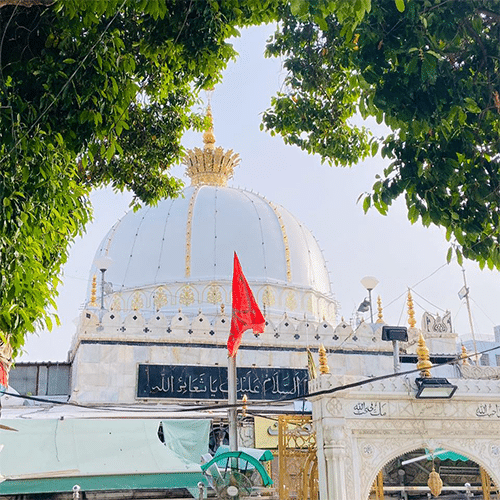The dargah is the final resting place of the Sufi saint Khawaja Moinuddin Chishti (R.A), who is also known as Gharib Nawaz, meaning “Benefactor of the Poor.” Khawaja Moinuddin Chishti was a 13th-century. Persian Sufi saint and a prominent figure in the Chishti order of Sufism.
The dargah was constructed in the early 13th century after Khawaja Moinuddin Chishti’s death. It has since become a center of pilgrimage for people of various faiths, including Muslims, Hindus, Sikhs, and others. The shrine’s architecture is a blend of Mughal and Indian styles.
The Ajmer Sharif Dargah is renowned for its spiritual significance, and it is believed that prayers and wishes made at the shrine have a special significance. It attracts millions of devotees and visitors each year who seek blessings, solace, and spiritual enlightenment.
The Urs festival,
commemorating the death anniversary of Khawaja Moinuddin Chishti, is a major event at the dargah. It lasts for six days and is marked by various rituals, qawwalis, and offerings. Pilgrims from across the world visit during this time.
The dargah complex consists of several structures, including the shrine itself, a mosque, a courtyard, and various chambers. The shrine is covered in a glistening sheet of silver and is a place of veneration.
The dargah is a center of
Sufi traditions, emphasizing love, peace, and tolerance. The teachings of Khawaja Moinuddin Chishti promote a message of universal love and service to humanity.
The Ajmer Sharif Dargah is not only a place of religious significance but also a symbol of cultural and spiritual unity. It stands as a testament to the rich Sufi heritage and the enduring legacy of Khawaja Moinuddin Chishti, whose teachings continue to inspire and draw people from diverse backgrounds to this sacred place.







